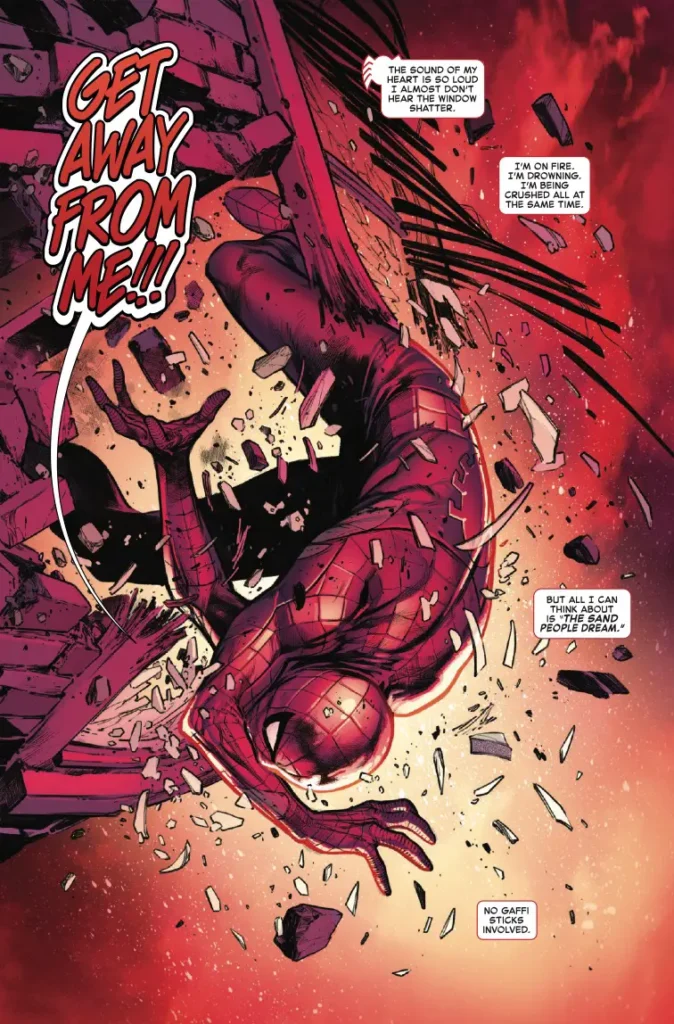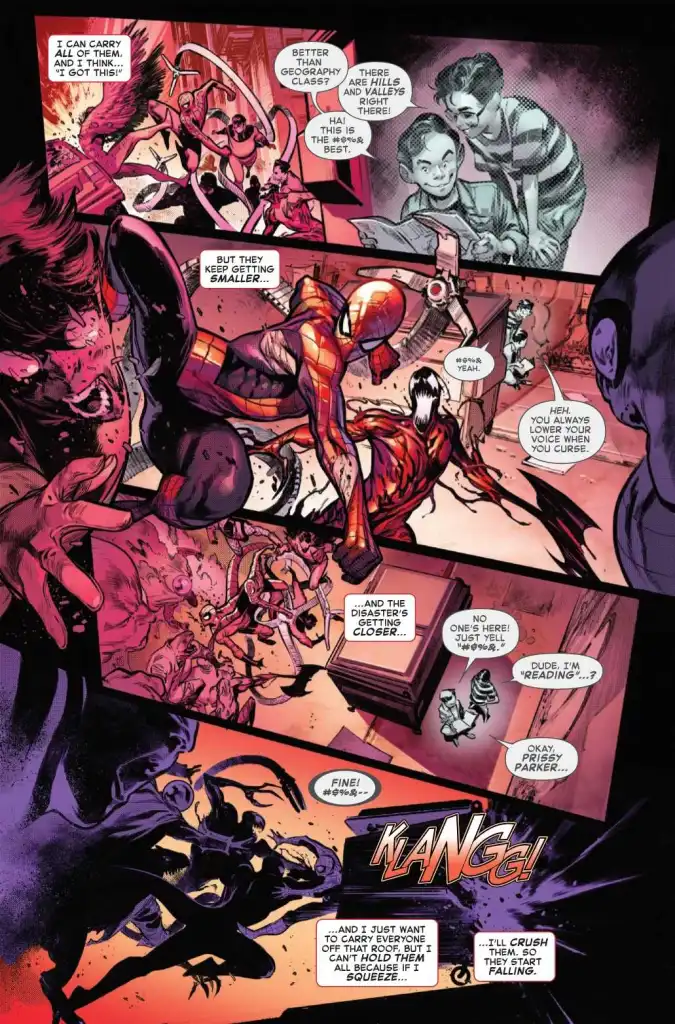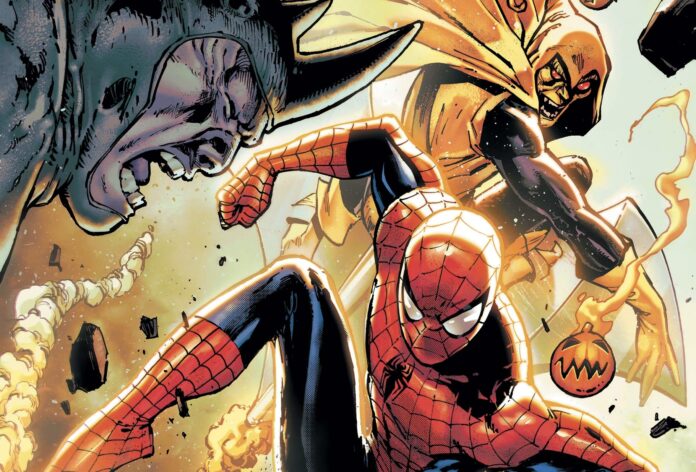After years of juggling double lives, Peter Parker has never craved normalcy more. In The Amazing Spider-Man #2, writer Zeb Wells and artist Pepe Larraz slam the brakes on any sense of stability just as Peter lands a promising new job. But if there’s one rule that’s always followed Peter like a shadow, it’s this: peace never lasts long in the life of your friendly neighborhood Spider-Man.

Fresh off a grueling stretch of job interviews, Peter finally catches a break thanks to an internal recommendation that lands him the role of Supervising Engineer of Cooperative Disciplines at Rand Industries. It’s a title that feels absurdly long—but also very Peter. There’s even time for drinks with Shay Marken and a cozy evening with Brie. Life seems… manageable.
Wells quickly shifts the tone from superhero spectacle to psychological thriller. As Peter investigates, he uncovers what seems like a villainous powwow—twelve rogues gathered in one room, the Terrible Twelve, a rogues’ gallery on steroids. The sight transforms the issue from a standard superhero caper into an overwhelming battle royale. Larraz illustrates the chaos with cinematic flair, each panel pulsating with color and movement. Marte Gracia’s palette is especially noteworthy, casting the villains in sharp reds and eerie purples against bright yellows and searing oranges. Spider-Man looks like a beacon of hope and chaos all at once, tangled in an eye-popping tapestry of destruction.
But then the narrative takes a surreal turn.
Without warning, Peter begins jumping through time, blinking in and out of moments like he’s stuck in a broken VHS tape of his own life. One minute he’s dodging killer blows in the street, the next he’s back in a boardroom at Rand Industries. It’s disorienting in the best way—evoking films like Click and Inception, where control slips away faster than the plot can keep up. These time skips don’t just disorient Peter—they begin to fray the fabric of his reality.

Wells expertly taps into Peter’s internal anxiety, allowing the reader to feel the weight of his confusion and guilt. Flashes of black-and-white memories pop up like landmines in the middle of battle, dragging us deeper into Peter’s fractured psyche. He’s slipping—not just through time, but emotionally, physically, maybe even morally.
Norman Osborn, now somewhat redeemed in this continuity, steps in as a surprisingly grounding figure. Peter calls him a friend, a notion that still feels loaded no matter how much time has passed since Norman’s Green Goblin days. With Oscorp closing down, Norman still finds time to help, determined to uncover what’s infected both Rhino and Peter. The mystery deepens—whatever hit them wasn’t just chemical or hallucinogenic. It was something deeper. Something designed. And possibly supernatural.
Pepe Larraz’s art is nothing short of stellar throughout the issue. Whether it’s Spider-Man twisting mid-air through a dozen villains or Peter slowly unraveling under the stress of a fragmented timeline, Larraz makes every moment feel immediate and explosive. He even adds subtle touches—like martial artist-style wrappings on Peter’s hands—to ground the hero’s evolution in visual cues. Gracia’s colors continue to do the heavy lifting in tone-setting, and Joe Caramagna’s lettering bursts with personality, from ominous villain dialogue in black-edged balloons to Spidey’s signature quips delivered in bouncing, energetic fonts.
Wells balances the bizarre and the emotional with precision, never losing sight of Peter’s core. Amid the illusions and looming threats, Peter is still trying to make things work—with Shay, with his job, with his purpose. The book does a fantastic job of making Peter’s life feel full, not just in chaos, but in human connection. Even newer characters like Dr. Maira Osmani-Milton and Brian Nehring add to that depth, with subtle signs that they, too, may be more than they seem. The issue ends with an interesting reveal of a deep cut villain which should peek the interest of fanboys everywhere.

Yet as much as this issue throws at us—from giant villain team-ups to time glitches—it never feels bloated. It’s paced like an action thriller, but rooted in the character-driven storytelling that makes Spider-Man endure.
The Amazing Spider-Man #2 is a wild, unpredictable ride. It asks big questions about control, trust, and reality itself. Most importantly, it continues to push Peter Parker into new narrative spaces without betraying the character’s heart. As the mystery deepens and the time skips intensify, one thing becomes clear: Spider-Man may need more than spider-sense to survive what’s coming next.
Verdict: Emotionally rich, visually dazzling, and refreshingly ambitious, Amazing Spider-Man #2 throws Peter into the deep end—and makes it thrilling to watch him swim.

